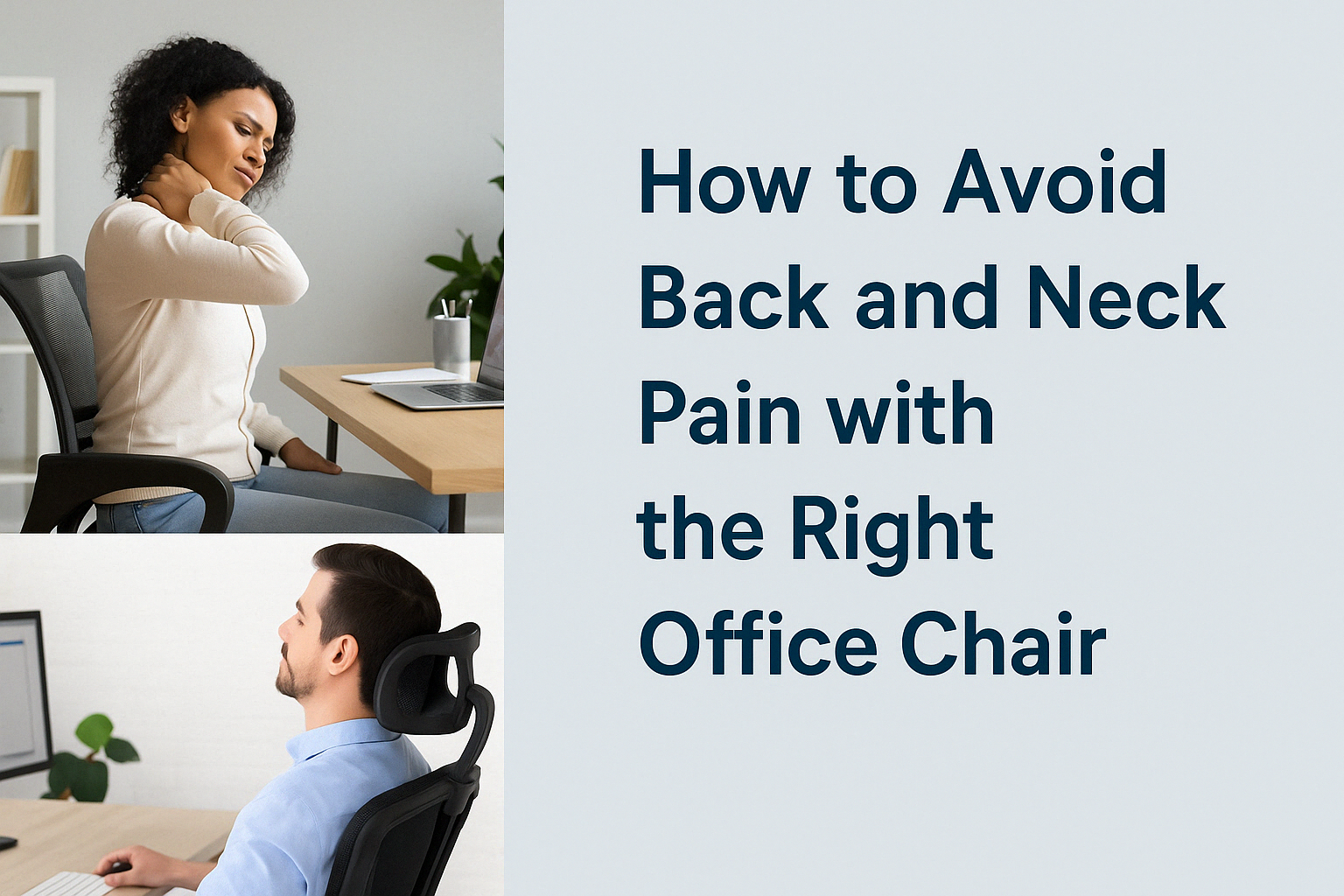Working from home or sitting for extended hours at a desk has become the norm for millions of people. While the flexibility is great, it often comes at a painful cost—literally. Back and neck pain are among the most common complaints of remote workers and office professionals alike.
The solution? It might be as simple as upgrading your chair.
The right ergonomic office chair doesn’t just make sitting more comfortable—it actively supports your spine, promotes better posture, and helps reduce long-term strain. In this guide, we’ll explore how to avoid back and neck pain by choosing the perfect office chair, setting it up correctly, and understanding what features truly matter.
Why Your Chair Matters More Than You Think
When we sit for long hours in a poorly designed chair, our spine loses its natural curve. This leads to slouching, rounded shoulders, forward head posture, and, eventually, pain in the lower back, upper back, neck, and even shoulders.
An ergonomic chair is designed to support the natural alignment of your spine. It adjusts to your body and movements, rather than forcing your body to adapt to a rigid structure. Over time, the difference can be life-changing.
Key Features to Look for in an Ergonomic Office Chair
Here’s what separates a good chair from a back-pain-inducing one:
1. Adjustable Lumbar Support
Lower back support is crucial. Look for a chair with adjustable lumbar support that follows the natural S-curve of your spine. Some high-end chairs even offer dynamic lumbar support that moves with you as you shift in your seat.
2. Seat Height Adjustment
Your feet should rest flat on the floor, with your knees at a 90-degree angle. An adjustable seat height ensures your legs are neither dangling nor compressed.
3. Seat Depth
A seat that’s too deep or too shallow can put pressure on your thighs or force you to slouch. The ideal seat depth allows about 2–3 inches of space between the back of your knees and the edge of the chair.
4. Backrest Recline and Tilt Lock
Reclining occasionally relieves pressure on your spine. A good chair allows for a recline angle of about 100 to 110 degrees and includes a tilt lock feature so you can stay in your preferred position.
5. Headrest and Neck Support
A headrest can prevent your neck from craning forward—especially if you’re spending hours reading or watching screens. It keeps your head aligned with your spine, reducing strain on your neck and shoulders.
6. Armrest Adjustability
Armrests should support your forearms while keeping your shoulders relaxed. Look for chairs with 3D or 4D armrests that adjust in height, width, depth, and angle.
How to Set Up Your Chair for Maximum Support
Even the best chair won’t help if you’re using it incorrectly. Here’s how to get the most out of your setup:
✦ Sit All the Way Back
Make sure your back is fully supported by the backrest. Avoid perching on the edge of the seat or slouching forward.
✦ Adjust Lumbar Position
Align the lumbar support with your lower back’s natural curve. It should fit snugly in the small of your back, not above or below it.
✦ Keep Feet Flat
If your feet don’t touch the floor comfortably, use a footrest. Avoid crossing your legs, which can disrupt circulation and posture.
✦ Elbow and Wrist Alignment
Adjust your armrests so your elbows are at a 90-degree angle and close to your body. Wrists should remain neutral—not bent up or down—when typing.
✦ Monitor Height Matters Too
Your chair setup should complement your screen. Position your monitor so the top of the screen is at or just below eye level to prevent neck strain.
Best Office Chairs That Support Back & Neck Health
Here are a few highly recommended chairs for ergonomic comfort:
- Herman Miller Aeron – Industry gold standard with advanced lumbar support
- Steelcase Leap V2 – Exceptional adjustability and spine-friendly recline
- Secretlab Titan Evo – Gaming-style chair with a built-in headrest and good lumbar support
- Branch Ergonomic Chair – Budget-friendly option with solid ergonomic features
- Sihoo M57 – A great mid-range pick with a mesh back and adjustable lumbar
Each of these offers unique benefits, so choose based on your budget, body type, and how long you sit each day.
Bonus Tips for a Pain-Free Workday
Even with the best chair, movement is key to avoiding stiffness and discomfort. Here’s what else you can do:
- Take Micro Breaks: Stand or walk every 30–45 minutes.
- Stretch: Include basic neck rolls, back stretches, and hip openers in your routine.
- Alternate Positions: Consider a sit-stand desk setup for more variety.
- Stay Hydrated: Good hydration supports joint and muscle function.
Final Thoughts
Back and neck pain may feel like a side effect of modern work life, but it doesn’t have to be. Investing in the right office chair—and using it correctly—can dramatically improve your posture, comfort, and overall productivity.
